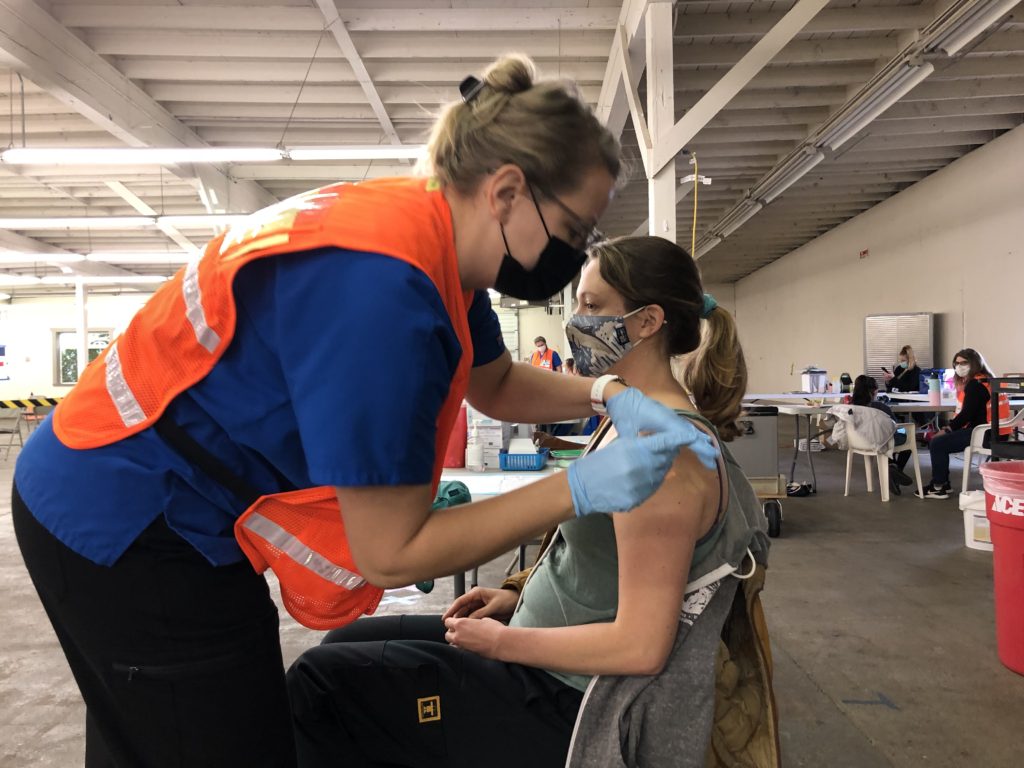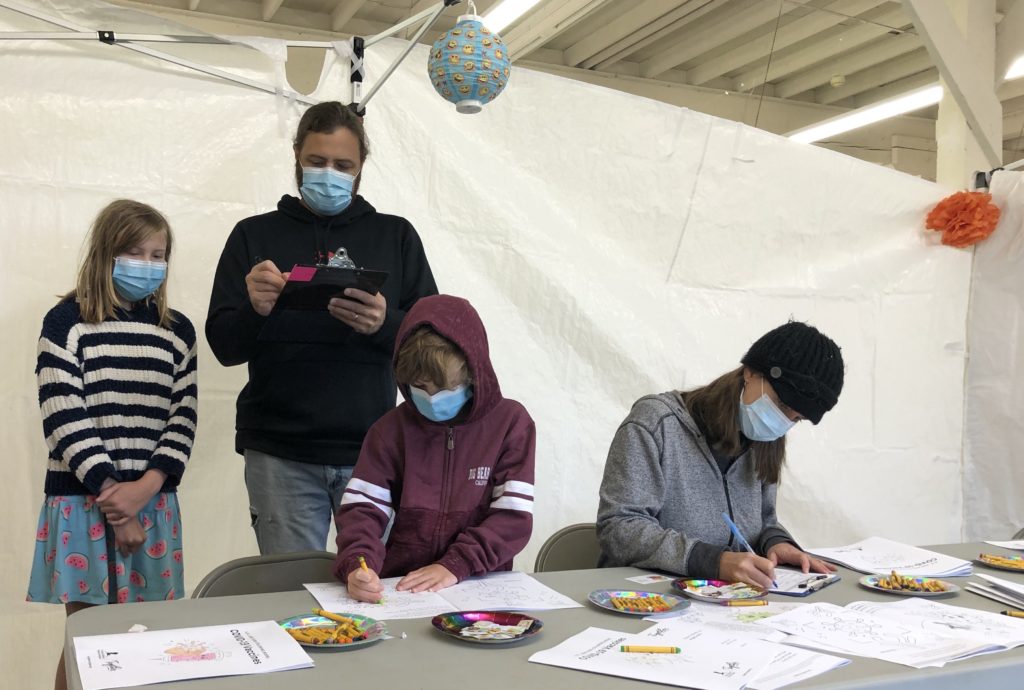
By QUINTON SMITH/YachatsNews.com
After a steep decline from this summer, the number of COVID-19 cases in Lincoln County leveled off in November and now health officials worry that holiday gatherings could cause a spike in December and January, similar to last year.
There were 334 confirmed COVID-19 cases in Lincoln County during November, slightly fewer than the 358 cases in October but less than half the number from August.
And this is all before the newly detected Omicron variant is expected to reach Oregon from South Africa or Europe. The first case in the United States was confirmed Wednesday in California.

The number of Lincoln County COVID-19 cases is averaging 15 a day – similar to the height of the coronavirus surge last winter – but before vaccines were available for most county residents.
Although 28 percent of COVID-19 across Oregon are now occurring among the vaccinated, health officials say the vaccine is keeping all but a tiny number of them from being hospitalized or dying.
That’s especially true lately in Lincoln County, which has a vaccination rate of nearly 80 percent, says Florence Pourtal, interim director of the Lincoln County Health Department. Covid-19 patients in the county’s two hospitals remain small in number – generally just 2-4 on any given day, although patients with the most serious cases are generally taken to Corvallis or other hospitals in the Willamette Valley.
“The hospital system here is holding up well,” Pourtal told county commissioners recently.
But health officials are waiting to see what happens two weeks after the Thanksgiving holiday when families and friends get together and during the Christmas season.
“This is how the surge started last year,” Pourtal said.
“I’m anticipating that we’ll be going back up,” she said. “Based on what we saw last year, even though we have a lot of people vaccinated … it’s possible we’ll see more cases.”
By mid-December, Lincoln County will again adjust its approach to vaccination clinics.

The last of the county’s mass vaccination clinics at the fairgrounds in Newport will be Friday, Dec. 17 because – as expected – the numbers have dropped off since boosters were authorized in October. The clinic delivered 196 doses last Friday, including four first doses, 155 booster and 23 to children, said clinic manager Jesse Noble.
In lieu of the big Newport clinic, LCPH will organize small, more mobile clinics in January with specific times and days of the week for various communities stretching from Yachats to Lincoln City.
“This model has worked extremely well,” Pourtel said. “It’s helped break barriers to (vaccine) access.”
Fifteen percent of children age 5-11 – or more than 550 — in the county have been vaccinated, including 23 more last Friday at a LCPH clinic in Newport. There will be another round of clinics at Lincoln County elementary and middle schools this month to administer second doses, then resume another round in February and March. Of the 2,544 children age 12-17 in Lincoln County, the Oregon Health Authority says 72 percent have received at least one dose of a vaccine.
“We have a lot more availability and vaccines than in the valley,” said LCPH spokeswoman Susan Trachsel. “They’re coming over here, especially for pediatric vaccines.”
Still, the county’s future approach is evolving.
Lincoln County Public Health, which has won praise both from state and local officials for leading public health providers in the county to get more than 80 percent of adults vaccinated against COVID-19, is hoping to transition out of its emergency response mode.
“How do we sustain this work but transition to other entities?” Pourtal told county commissioners last week, referring to a long-term coronavirus plan that may at some point resemble annual flu shots that many people now get. “This is not something we can sustain forever.
“We need to start thinking that this is going to be part of our lives for a long time,” she said. “The virus is very, very good at adapting.”

Testing in schools
The Lincoln County School District this week began implementing a statewide “Test to Stay” program that allows COVID-19 tests for unvaccinated students who may have been exposed to the virus at school or on a bus.
Previously those students would have been sent home to quarantine for up to 10 days. This is designed to keep kids in school. At one time this fall more than 130 students across the district had been told to quarantine. That number for grade schools is below 10 this week, said assistant superintendent Susan Van Liew.
Districts across Oregon are being given BiNax Now rapid tests, which can show results in 15 minutes. If an exposed, unvaccinated student tests negative they will be allowed to stay in school.
Students 14 and under need a signed consent form to take the test.
“We believe that the “Test to Stay” option will support our efforts to keep children in school and reduce unnecessary exclusion for those students who test negative,” the district said in a letter to parents. “Vaccinated students will not need to be excluded or tested.”
Breakthrough cases
The number of so-called “breakthrough” cases – COVID-19 illnesses occurring in vaccinated people – crept up to 28.5 percent of all cases in Oregon between Nov. 14 and Nov. 20, according to the Oregon Health Authority. The average age of the breakthrough cases during that period was 46. There were 71 cases in people aged 12 to 17.
To date, there have been 43,398 COVID-19 vaccine breakthrough cases in Oregon. The average age of all cases is 48. Breakthrough cases have been reported in all 36 counties.
But the OHA said cases of COVID-19 are far more common in unvaccinated people, with the rate of COVID-19 in unvaccinated people 4.5 times higher than in vaccinated people. To date, 4.4 percent of vaccine breakthrough cases have been hospitalized and 1.2 percent have died. The average age of vaccinated people who died was 81.
Weekly declines
The OHA’s COVID-19 Weekly Report released Wednesday showed a decrease in daily cases and hospitalizations.
The number of cases across the state from Nov 22-28 decreased by 25 percent and the percentage of positive tests declined slightly to 5.6 percent from 6 percent the previous week.
There were 226 new COVID-19 hospitalizations during the Nov. 22-28 period, down from 268 the previous week — a 16 percent drop.



